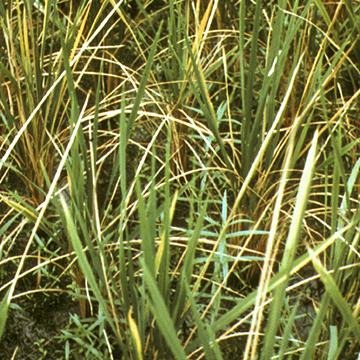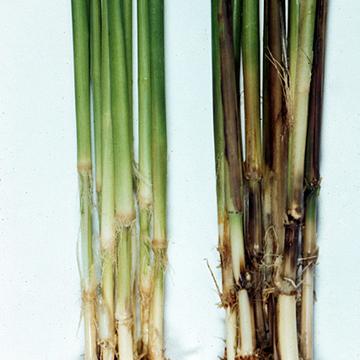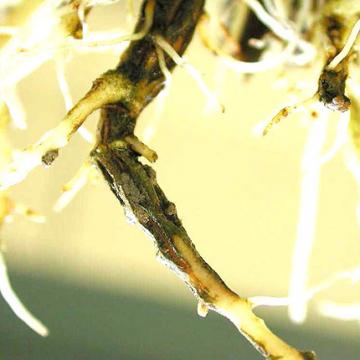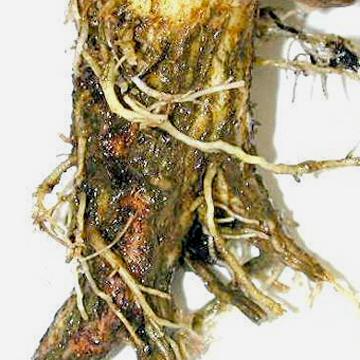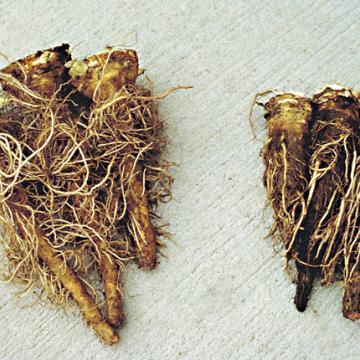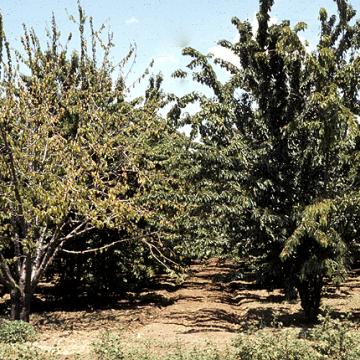DISEASE: Bacterial foot rot
HOST: Rice
The disease causes sheaths to turn dark brown and rot; dead leaves droop. Nodes, culms, and crowns also decay, and infected tillers are easily detached from the crown. Culms and internodes turn black.

Bacterial foot rot | Rice
DISEASE: Bacterial foot rot
HOST: Rice (Oryza sativa)
PATHOGEN: Dickeya zeae
PATHOGEN SYNONYM: Erwinia chrysanthemi pv. zeae
SOURCE: M. Goto
DISEASE: Bacterial foot rot
HOST: Rice
Decayed culms (right) and healthy culms (left). Leaf sheaths of infected plants exhibit dark brown decay and attached leaves turn yellow and wilt.
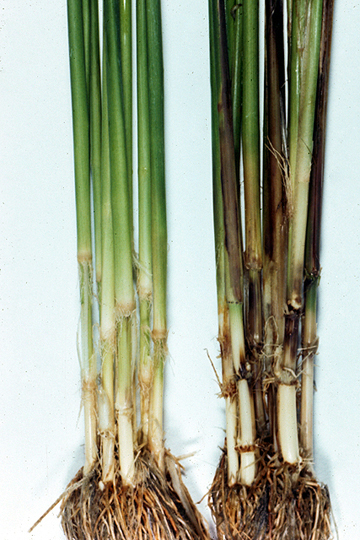
Bacterial foot rot | Rice
DISEASE: Bacterial foot rot
HOST: Rice (Oryza sativa)
PATHOGEN: Dickeya zeae
PATHOGEN SYNONYM: Erwinia chrysanthemi pv. zeae
SOURCE: M. Goto
DISEASE: Corky root
HOST: Lettuce
Corky root causes a reduction in size of lettuce heads and root systems; susceptible cultivar (right) and resistant cultivar (left).

Corky root | Lettuce
DISEASE: Corky root
HOST: Lettuce (Lactuca sativa)
PATHOGEN: Sphingomonas suberifaciens
PATHOGEN SYNONYM: Rhizomonas suberifaciens
SOURCE: E. J. Ryder
DISEASE: Corky root
HOST: Lettuce
Close-up of root with malformed, corky appearance and longitudinal ridges of brown tissues.
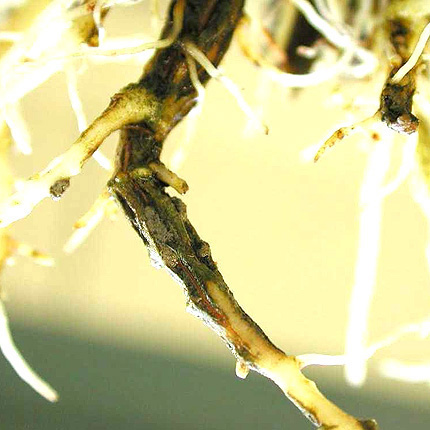
Corky root | Lettuce
DISEASE: Corky root
HOST: Lettuce (Lactuca sativa)
PATHOGEN: Sphingomonas suberifaciens
PATHOGEN SYNONYM: Rhizomonas suberifaciens
SOURCE: A. van Bruggen
DISEASE: Corky root
HOST: Lettuce
Initial symptoms of disease are yellow lesions on taproot and main laterals. Greenish brown bands occur around roots. Root pith may become brown and hollow.
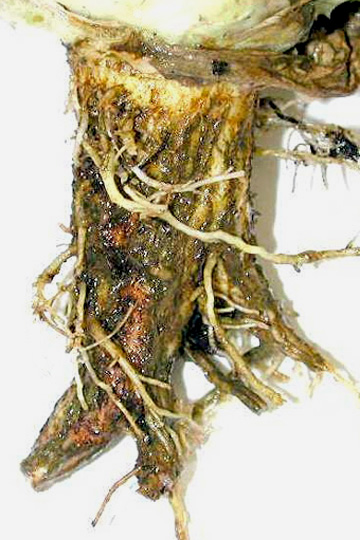
Corky root | Lettuce
DISEASE: Corky root
HOST: Lettuce (Lactuca sativa)
PATHOGEN: Sphingomonas suberifaciens
PATHOGEN SYNONYM: Rhizomonas suberifaciens
SOURCE: A. van Bruggen
DISEASE: Corky root
HOST: Lettuce
Differences in corky root symptoms between susceptible cultivar (right) and resistant cultivar (left).
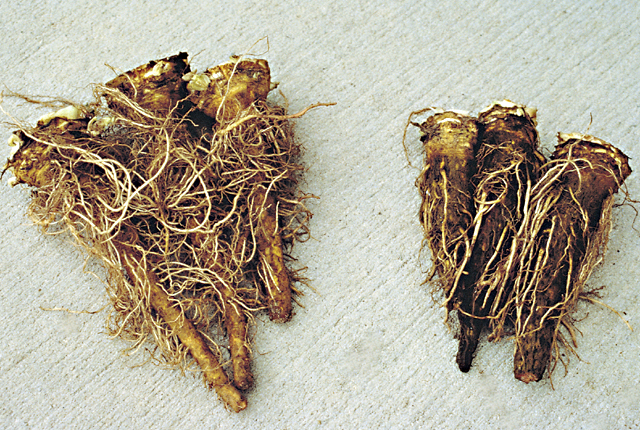
Corky root | Lettuce
DISEASE: Corky root
HOST: Lettuce (Lactuca sativa)
PATHOGEN: Sphingomonas suberifaciens
PATHOGEN SYNONYM: Rhizomonas suberifaciens
SOURCE: E. Ryder
DISEASE: X-disease (Western X) or buckskin
HOST: Cherry
Comparison of normal, dark cherries (in hand) with infected, immature cherries with less pigmentation.
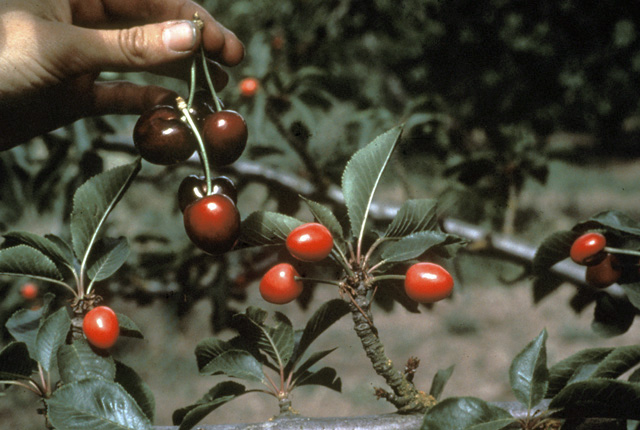
X-disease (Western X) or buckskin | Cherry
DISEASE: X-disease (Western X) or buckskin
HOST: Cherry (Prunus avium)
PATHOGEN: 'Candidatus Phytoplasma pruni'
PATHOGEN SYNONYM: Phytoplasma X-disease group
SOURCE: A. Purcell, M. Davis
DISEASE: X-disease (Western X) or buckskin
HOST: Cherry
Healthy cherry shoot (left) and stunted shoot (right).
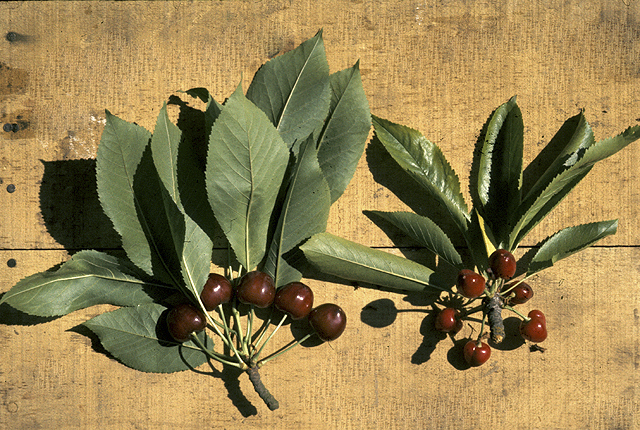
X-disease (Western X) or buckskin | Cherry
DISEASE: X-disease (Western X) or buckskin
HOST: Cherry (Prunus avium)
PATHOGEN: 'Candidatus Phytoplasma pruni'
PATHOGEN SYNONYM: Phytoplasma X-disease group
SOURCE: S. Thomson
DISEASE: X-disease (Western X) or buckskin
HOST: Cherry
Infected trees on 'Mazzard' rootstock (right) may live for years, producing fruit with symptoms. Trees on 'Mahaleb' rootstock (left) usually die rapidly in year of infection, about time of fruit ripening.
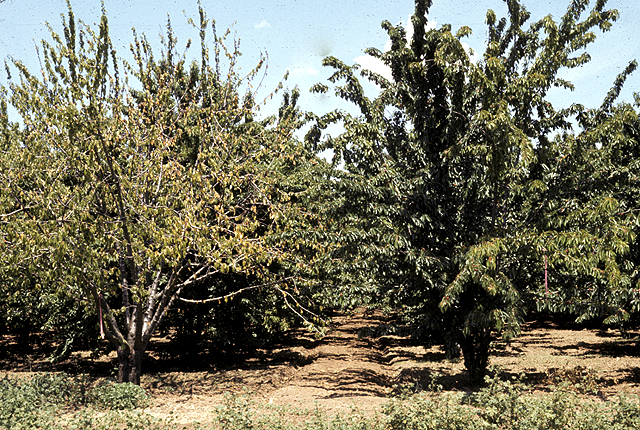
X-disease (Western X) or buckskin | Cherry
DISEASE: X-disease (Western X) or buckskin
HOST: Cherry (Prunus avium)
PATHOGEN: 'Candidatus Phytoplasma pruni'
PATHOGEN SYNONYM: Phytoplasma X-disease group
SOURCE: S. Thomson


